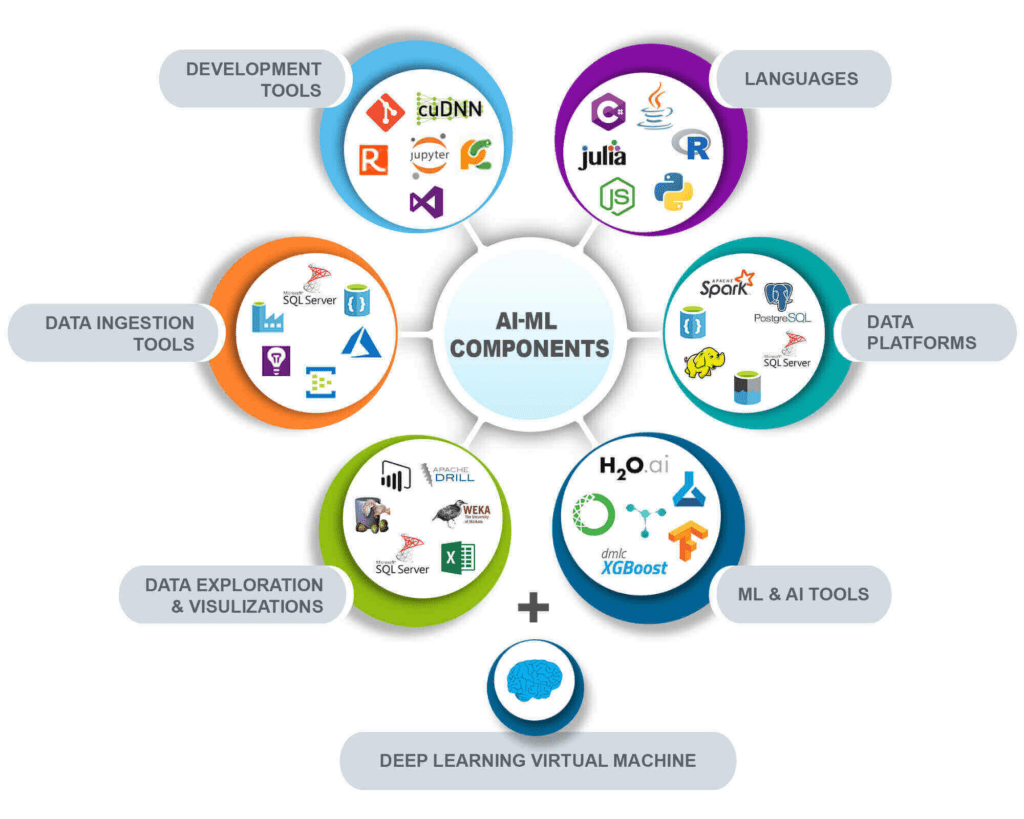How to Create Artificial Intelligence
How to Create Artificial Intelligence – Artificial Intelligence (AI) has revolutionized numerous industries, from healthcare to finance, by enabling machines to perform tasks that typically require human intelligence. If you’re intrigued by the idea of creating your own AI systems, you’re in the right place. In this article, we’ll explore the process of creating artificial intelligence from scratch, the tools and technologies involved, as well as the challenges and the future of AI.
Overview of Artificial Intelligence

Artificial Intelligence, often abbreviated as AI, is a branch of computer science that focuses on creating systems capable of performing tasks that typically require human intelligence. These tasks include learning, reasoning, problem-solving, perception, and language understanding. AI systems aim to simulate human cognitive abilities to achieve specific goals efficiently and autonomously.
AI encompasses various subfields, including machine learning, natural language processing, computer vision, robotics, and expert systems. Machine learning, in particular, is a subset of AI that focuses on developing algorithms that allow computers to learn from data and make predictions or decisions without being explicitly programmed.
The importance of AI has grown significantly in recent years, driven by advances in computing power, the availability of large datasets, and breakthroughs in algorithms and techniques. AI technologies are being applied across diverse industries, including healthcare, finance, transportation, retail, and entertainment, to automate tasks, improve efficiency, and enhance decision-making.
Despite its potential benefits, AI also raises ethical, social, and economic concerns. These include issues related to job displacement, bias in algorithms, privacy and security, and the ethical implications of autonomous systems. As AI continues to evolve and permeate various aspects of society, it’s crucial to address these challenges responsibly and ensure that AI technologies are developed and deployed in ways that benefit humanity.
Overall, AI represents a transformative force with the potential to revolutionize industries, enhance human capabilities, and shape the future of society. As researchers and practitioners continue to push the boundaries of AI technology, it’s essential to approach its development and adoption with careful consideration of its impact on individuals, communities, and the world at large.
Understanding the Basics of AI

Definition of AI
AI involves the development of algorithms and models that allow machines to perform tasks that typically require human intelligence, such as problem-solving, decision-making, and understanding natural language.
Importance of AI
AI has become indispensable in today’s digital age, driving innovation and efficiency across industries. From personalized recommendations on streaming platforms to autonomous vehicles, AI touches nearly every aspect of our lives.
The Process of Creating Artificial Intelligence

Creating artificial intelligence involves several key steps:
Gathering Data
The first step in creating AI is collecting relevant data. This data serves as the foundation for training AI models and algorithms.
Data Preprocessing
Once the data is collected, it needs to be preprocessed to ensure its quality and suitability for training. This may involve cleaning the data, handling missing values, and normalizing features.
Choosing Algorithms
Selecting the right algorithms is crucial for the success of an AI project. Depending on the nature of the task, developers may choose from a wide range of machine learning algorithms, such as decision trees, neural networks, or support vector machines.
Model Training
With the data prepared and algorithms selected, the next step is to train the AI model. During this phase, the model learns from the data to make predictions or decisions.
Testing and Validation
After training, the model is tested and validated to assess its performance and generalization ability. This involves evaluating the model’s accuracy, precision, recall, and other metrics.
Tools and Technologies for AI Development

Programming Languages
Python is the most popular programming language for AI development, thanks to its simplicity, versatility, and rich ecosystem of libraries such as TensorFlow, PyTorch, and scikit-learn.
Frameworks and Libraries
Frameworks like TensorFlow and PyTorch provide high-level APIs for building and training AI models, while libraries like scikit-learn offer a wide range of algorithms and tools for data preprocessing and model evaluation.
Cloud Computing Services
Cloud platforms like Amazon Web Services (AWS), Microsoft Azure, and Google Cloud Platform (GCP) offer scalable infrastructure and services for AI development, including GPU-accelerated computing and managed machine learning services.
Challenges in Creating AI

Despite its potential, creating artificial intelligence comes with several challenges:
Data Quality and Quantity
The success of AI models depends heavily on the quality and quantity of data available for training. Obtaining large, diverse, and labeled datasets can be challenging in many domains.
Overfitting and Underfitting
Overfitting occurs when a model learns to memorize the training data rather than generalize to unseen data, while underfitting occurs when a model is too simple to capture the underlying patterns in the data.
Ethical Considerations
AI systems can perpetuate biases present in the data used for training, leading to unfair or discriminatory outcomes. Developers must address ethical considerations and ensure that AI systems are designed and deployed responsibly.
Future of Artificial Intelligence

The future of artificial intelligence holds exciting possibilities:
Advancements in AI
Ongoing research and development in AI are leading to breakthroughs in areas such as reinforcement learning, unsupervised learning, and explainable AI, paving the way for more intelligent and interpretable AI systems.
Impact on Society
AI has the potential to transform industries, improve healthcare outcomes, enhance productivity, and address global challenges. However, it also raises concerns about job displacement, privacy, and security, highlighting the need for ethical and regulatory frameworks.
Conclusion
Creating artificial intelligence is a complex but rewarding endeavor. By understanding the basics of AI, leveraging the right tools and technologies, and addressing challenges such as data quality and ethical considerations, developers can contribute to the advancement of AI and harness its potential for the benefit of society.



2 thoughts on “How to Create Artificial Intelligence”